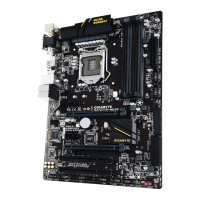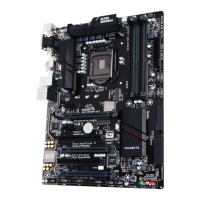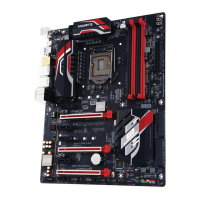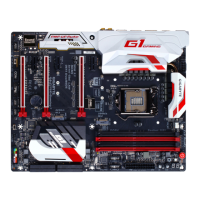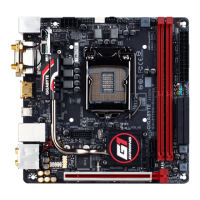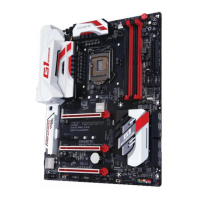- 51 -
B. Configuring SATA controller mode in BIOS
Setup
Make sure to configure the SATA controller mode correctly
in system BIOS Setup. For the BIOS Setup menus,
refer to Chapter 2, "BIOS Setup," "Integrated
Peripherals." Steps: 1. Turn on your computer and press
<Delete> to enter BIOS Setup during the POST (Power-
On Self-Test). Go to Peripherals\SATA Configuration,
make sure SATA Controller(s) is enabled. To create RAID,
set SATA Mode Selection to RAID.
2. If you want to configure UEFI RAID, follow the
steps in "C-1." To enter the legacy RAID
ROM, save the settings and exit BIOS Setup.
Refer to "C-2" for more information.
The BIOS Setup menus described in this section may differ from the exact
settings for your motherboard. The actual BIOS Setup menu options you will see
shall depend on the motherboard you have and the BIOS version.
C-1. UEFI RAID Configuration
Only Windows 10/8.1 64-bit supports UEFI RAID configuration.
Steps:
1. In BIOS Setup, go to BIOS Features and set Windows 8/10 Features to Windows 8/10
and CSM Support to Disabled. Save the changes and exit BIOS Setup.
2. After the system reboot, enter BIOS Setup again. Then enter the Peripherals\Intel(R)
Rapid Storage Technology sub-menu.
3. On the Intel(R) Rapid Storage Technology menu, press <Enter> on
Create RAID Volume to enter the Create RAID Volume screen. Enter
a volume name with 1~16 letters (letters cannot
be special characters) under the Name item and
press <Enter>. Then, select a RAID level. RAID
levels supported include RAID 0, RAID 1,
Recovery, RAID 10, and RAID 5 (the
selections available depend on the number of the
hard drives being installed). Next, use the down
arrow key to move to Select Disks.
(Note 1)
An
M.2
PCIe
SSD
cannot
be
used
to
set
up
a
RAID
set
either

